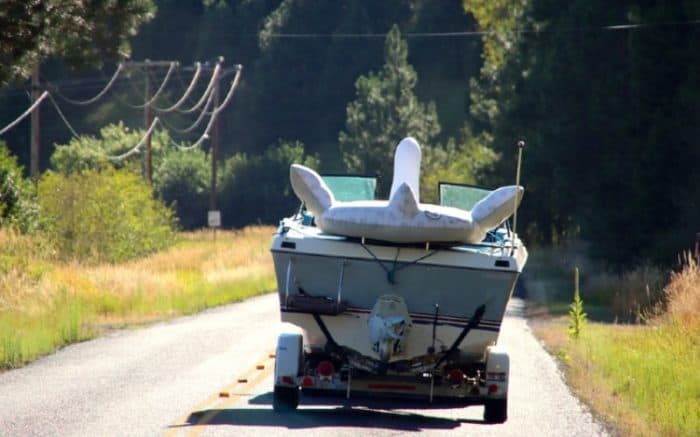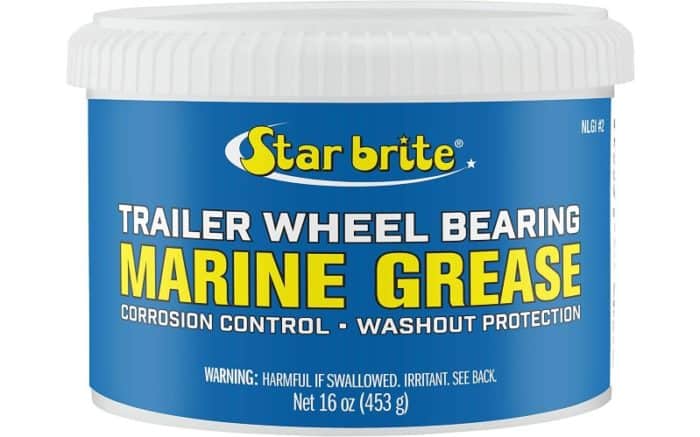The 8 Best Boat Trailer Hubs for 2024
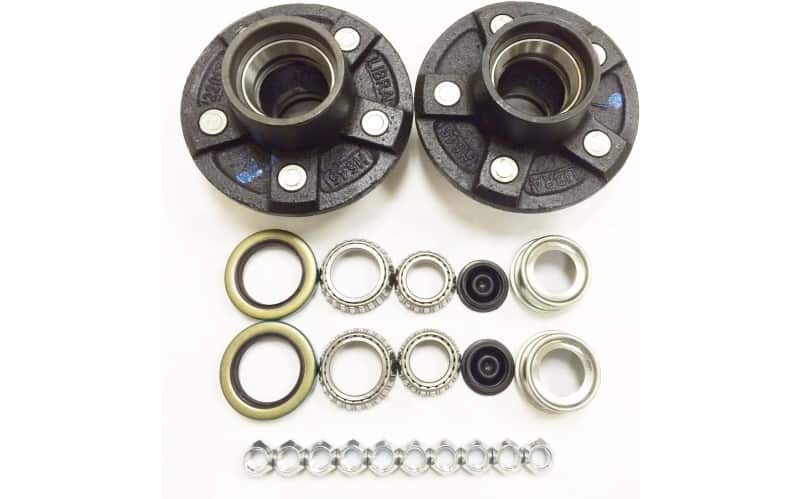
Libra Trailer Idler Hub Kit
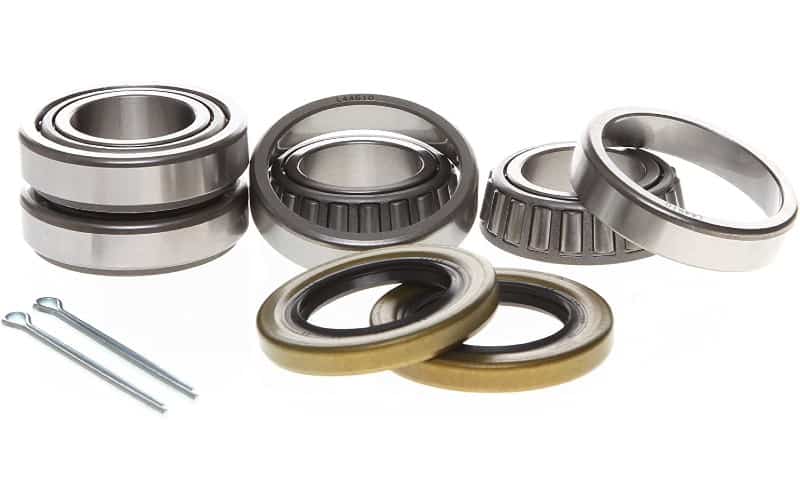
ReplacementKits Bearing Replacement Kit
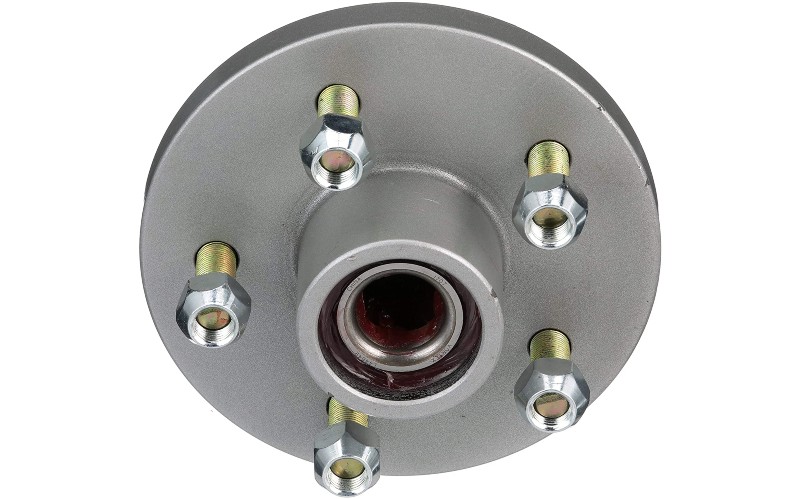
Sea Choice Galvanized Hub Kit
Your boat trailer is only as good as its bearings and hubs. If your bearings seize up on you, good luck getting that wheel in motion. Then it doesn’t matter if you have premium bunks, guides, or even a paint job. You’re stuck. You need to make sure you have some quality bearings and hubs to keep those wheels turning and to ensure your trailer can support your boat’s weight. Also you need to make sure they can handle the extreme conditions your boat trailer is going to be exposed to including harsh weather and submersion in water. Let’s take a look at some of the best hubs and bearings on the market.
Libra Trailer Idler Hub Kit

Libra has put together a great kit here. Two hubs and bearings with races, nuts and everything you need to do a full replacement on two wheels. This would be great at a much higher price but for what you’re going to pay you won’t find a better quality deal out there. This has my pick for the best option overall when you’re replacing your hubs and wheel bearings.
The kit includes:
- (2)L68149 inner cone bearings
- (2)x L44649 outer cone bearings
- (2)x Grease seals 1.719″ x 2.565″
- (2)x E Z lube grease caps with rubber plug
- (10) cone wheel nuts 1/2″-20 thread
Installation is easy right out of the box with these but don’t slap them on so fast. You’re going to want to give the bearings a good inspection first and just saturate them with your marine grease. That’s front and back, leave no bearing untouched. They come greased but not nearly well enough. Get them ready to go before installation and make sure the hubs get greased inside, too.
These are designed for a 3,500 lb axle so most smaller to mid sized boat trailers will do great with them. They’re not premium quality, high powered bearings and hubs though, so I can’t recommend them for hauling massive trailers and boats but that’s not what they’re for, right? Use a Bearing Buddy to keep them lubes up and corrosion free and you should have a great, reliable set here that lasts you for a while.
Libra manufactures OEM parts and has done so for over 15 years. If you want to feel confident that you’re getting some of the best hubs and bearings out there for your money, then this is what you want.
ReplacementKits Bearing Replacement Kit

Need replacement bearings in a hurry but don’t want to drop a lot of cash? ReplacementKits makes aftermarket products that are reliable and well-priced including these trailer bearings. These are designed for smaller trailers with an axle rated for up to 2,000 lbs. If you need a different size, take a look at their options because they produce a lot more.
The kit contains inner and outer bearings for two wheels along with the grease seals and cotter pins. Make sure you give them a healthy coating of quality grease during the install process as well as in the hubs. Bearing Buddies would also be a good idea to keep them clean. And remember, these are lightweight bearings, they’re not designed for heavier trailers and boats, so don’t try to strain them too far.
Sea Choice Galvanized Hub Kit

Sea Choice is an outstanding name in marine products and technology so you can trust they know what they’re doing with a boat trailer hub. The kit includes Kit includes pre-greased bearings at 1 ⅜” and 1 1/16” sizes,, seals, dust caps, lug nuts and a cotter pin. It’s designed to handle 1,750 pounds. The kit covers just one of your wheels so don’t forget to order a second if you’re doing two wheels.
The lugs are all standard so no need to worry about any unusual tools necessary to get it in place. They’re zinc coated just like the hub itself to help protect from the harsh environments your trailer is likely to end up in. The grease inside is Lucas brand and designed for high temperatures so it’s also quality stuff as well.
The installation process for this is about as easy as you can hope for. Even a first timer should have no problem following instructions and getting this done in just minutes. Combined with overall strength and look, this is the total package. Not the cheapest on the market but definitely one of the best.
Rigid Hitch Trailer Bearing Replacement Kit
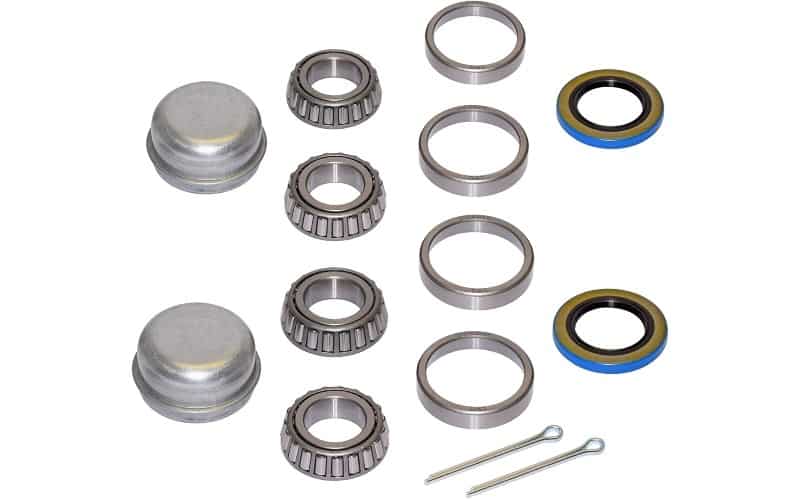
If your hubs are still looking good but you need new bearings, Rigid Hitch has you covered. Their trailer bearing replacement kit is top quality and very well priced for what you get. The kit includes
- (4) – L-44649 Bearings – 1-1/16 Inch Inside measurement
- (4) – L-44610 Races – 1.98 Inch Outside measurement
- (2) – Grease Seals – 1.98 Outside / 1.25 Inside
- (1) -Dust Cap – 1.986 Inch Diameter – 1.16 Inch Depth
The fact is, your hubs are likely to outlast your bearings so this kit is a great option when you don’t want to spend 4 or 5 times as much money on new hubs. They’re sturdy and well made but the proof is in the pudding, as they say. Once installed you can easily handle a 400 mile, 500 mile, even 1000 mile roadtrip no problems. No issues with overheating.
The kit is made in China and that may be a sticking point for some people based on past experiences. That said, in my experience, this is still a top quality product. Reviews seem to agree as well and this is one of Amazon’s top sellers. Lots of other boaters have had good experiences so if you’re worried about where they were made, hopefully that eases some of the concern.
Xike Bearings

Xike actually produces an incredible array of bearings so if this isn’t exactly what you’re looking for in terms of size, feel free to check out their other offerings. If something needs bearings, chances are they make them. They’ve been in business since 1945.
Their chrome steel bearings are well made and durable. They even offer a 1 year, 50,000 mile guarantee on them with no questions asked. That’s not a guarantee a lot of other companies are willing to make. You can tell the company actually knows what they’re doing just by the packaging as well. The bearings and races are each held separately and padded in the box so they don’t get rattled around and damaged. Cheaper products just don’t do that.
The kit contains:
- (4) 1-1/16”, L44649/L44610 bearings
- 12192TB seals
- (4) dust caps
- (2) cotter pins
There are no instructions included with the kit so if you aren’t sure what you’re doing, look up a video or follow our guide at the end of this article. The process is pretty straight forward.
Make sure you check the size of your grease seal against what’s in the box. They won’t always match up so you may need a backup seal.
AllianPar 4 Hub Bearing Kits
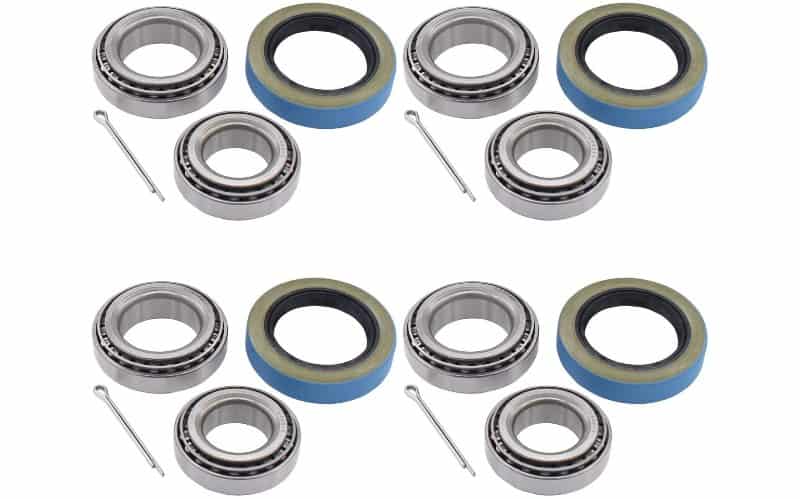
If you’re planning a big bearing replacement job then maybe AllianPar’s 4 trailer hub bearing kit is the choice for you. This is ideal if the hubs are in good working order but you need all new bearings as this kit can handle four separate hubs.
The kit includes:
- (4) inner bearings L68149 ID 1.378”
- (4) inner races L68111 OD 2.362”;
- (4) outer bearings L44649 ID 1.063”
- (4) outer races L44610 OD 1.980”;
- (4) double lip grease seals 10-19 (171255TB) 1.719” x 2.565”.
- (4) cotter pins
The bearings are designed for use with a 3500 lbs trailer axle. That said, I’d recommend not pushing your luck with these ones. These are a great low cost option but they’re not as well machined as something like Xike or Rigid Hitch. I do think these are ideal for a standard trailer hauling a boat out to the lake for a weekend of fishing. But if you’re running your trailer constantly and putting thousands of miles on it, you may want to pay a little extra for something a little more rugged and durable.
That said, for a trailer that isn’t running full time, these can offer great value and good reliability. Make sure you give them a good coating of grease as well as the insides of your hubs.
CE Smith Trailer Hub
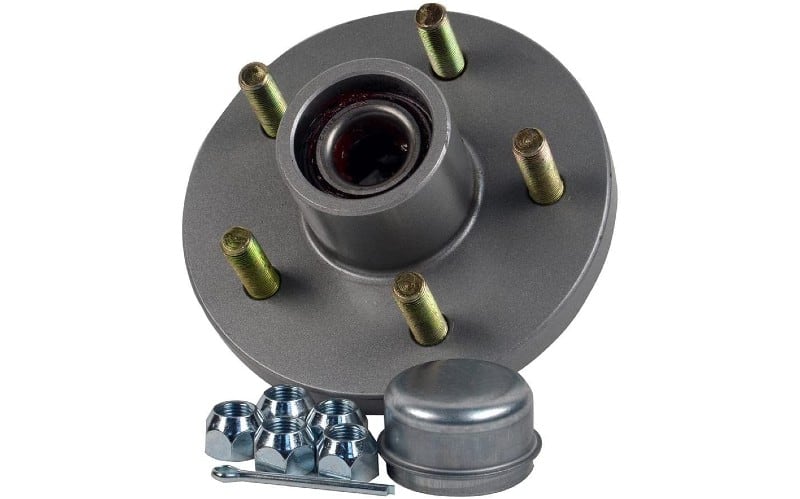
For one of the absolute easiest times you’ll have replacing your hub, CE Smith has you covered. If you’ve bought marine parts in the past you’ve probably come across this company, they’re one of the standouts in the industry. This trailer hub kit is as close as you can get to having someone just come and do it for you.
The galvanized hub comes pre-assembled with greased bearings already inside and ready to go. All you need to do is pop this on the spindle and secure it in place with the bolts already included.
Get your trailer up on a jack stand and you’ll have the old hub off and this new one on in about 10 or 15 minutes, it’s pretty simple. If convenience is the name of the game for you, then you can’t beat this. The bearings are already well saturated with Kendall high temperature marine grease as well. There’s a cotter pin and a dust cap included and it’s set to fit 1-3/8″ tapered to 1-1/16″ shaft.
One thing worth noting is that there’s no grease fitting on the back of the hub so you’ll want to ensure you have something there to keep it clear. Bearing Buddies are always a good idea as well to keep the bearings clean and sealed from the elements. The cap that comes with this kit is closed so there’s no grease zerk and no easy way to apply more grease when you need it. I say it’s best to swap it for something else.
All in all this may not be the top of the line model in terms of durability or design but you cannot beat the convenience and ease of use.
Tie Down Engineering Vortex Hub Kit
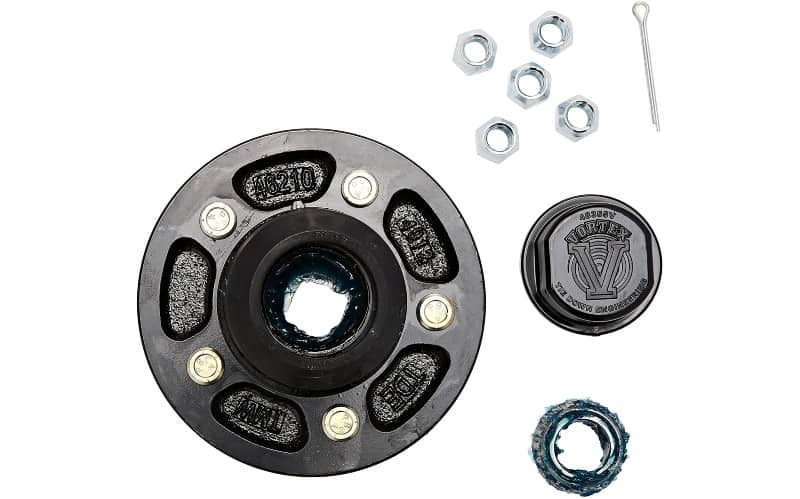
Tie Down Engineering’s Vortex boat trailer hubs features a weight capacity of 1750 lbs. The inner bearing measures 1.38” while the outer bearing is 1.06”. It’s pricier than the other options by a good deal but Tie Down Engineering is known for quality craftsmanship and it’s manufacturer in the USA.
The hub itself is cast as one piece of metal and that makes it sturdy and durable. It’s also heavier than a lot of others coming in at 9 pounds. The dust cap screws in place rather than the kind you just force in, which can be a really convenient feature.
Bearings are pre-greased but I do recommend adding more once you have them installed, anyway. You want to use some premium marine grade grease that you know is going to offer good protection.
How to Pick the Best Boat Trailer Bearings
There are a handful of factors you want to keep in mind when you’re shopping for new trailer wheel bearings. As easy as it would be to just pick up some new ones at Wal Mart, it doesn’t work quite like that. You need to make sure you have the right bearings to do the job.
What Exactly is in a Bearings Kit?
Let’s say you just bought a new boat trailer bearing kit. What does that comprise, anyway?
Trailer bearing repair kits should cover one wheel on your trailer, so you’ll need a couple to outfit an entire trailer. Inside the kit is what we’ll call the bearing itself. There’s a cup that fits into the boat trailer wheel hub and then a cone part that holds the rollers.
You have outer bearings and inner bearings here. The smaller cone and cup are the outer bearings because they fit outside and are covered by the grease cap. Inside, towards the center of your trailer, you’ll find the inner bearings and the grease seal.
Types of Boat Trailer Wheel Bearings
Not boat trailer bearing replacement is created equally and they work differently. Their function is the same, of course, but there are different kinds. For the most part, the only reason to use one type of bearings over another is because of load differences. Different bearings have a different load capacity or, more simply, they’re stronger. If a trailer is carrying a heavier load it will have a thicker axle. That, in turn, means it needs larger bearings. Beyond that, there is little difference between one type and another. The outside of your bearings should have a number etched into them you can use for reference when replacing to know what type you have. If you don’t see it, you’ll likely need to do some measuring if you’re not sure. Vernier calipers can be used to measure the inside diameter.
Holden Bearings
Also called Standard bearings, these are one of the two most common types you’ll find in any trailer. They are designed to handle 750kg or 1654 lbs on an axle measuring either 40 mm square or 39 mm round.
Slimline Bearings
Also called Ford bearings, a large number of trailers use these bearings and they are meant to carry heavier loads than standard bearings. These are designed to work with 45 or 50 mm solid steel axles. They’re rated for 1,500 kg per axle or about 3,300 lbs.
Parallel Bearings
It is unlikely that your trailer uses parallel bearings but I’ll cover them just in case you have a monster. These are for serious hauling with serious trailers. These are rated for over 1,600 kg or 3,500 pounds per axle, so we’re up at almost 2 tons an axle here. Obviously not the typical fare for a little boat trailer. Parallel bearings are also made differently. A slimline bearing will have smaller inner and larger outer bearings. Parallel, as the name suggests, keeps them even so they’re the same size in and out.
Bearing Buddies
You have probably seen or heard of Bearing Buddies when looking around for new bearings. These are not bearings themselves but they are a great idea to buy along with your new bearings. Bearing Buddies are protective caps that go on the hub over your bearings. They add an extra layer of protection that is far superior to that grease seal in terms of keeping your bearings clean and well sealed. These are especially helpful for salt water boaters because they will keep those bearings in pristine condition.
You can easily install them in the hub over the bearings with a few taps of a rubber mallet. Then you can use your grease gun to apply grease through the Bearing Buddy itself. An automatic pressure system prevents overfilling with grease as well. When that’s done, apply the cap and your bearings are safe and sound. The cap, or bra, also does a great job of keeping grease off the wheels.
As with anything, just make sure you’re buying the right size. If your trailer sees a lot of work, especially in and out of the water, then these are a great item to extend the life of your bearings.
Durability
It should come as no surprise that not all bearings are made to the same standard of quality. Cheap bearings may not perform the way you want them to, so keep an eye open for signs that you’re getting a durable product. You need something that can stand up to the two biggest banes of any moving metal parts in a trailer or other machine – corrosion and heat. You need heat and rust resistance to ensure these work well.
Because of friction, your bearings take some serious abuse. They need to handle high temperatures without warping. Marine grease is a big help here to ensure they stay lubricated. Unlubricated metal rotating at high temperatures for long periods spells disaster. You could suffer seized bearings or, even worse, this could cause the wheel itself to break and damage the axle, the trailer, and potentially your boat. So let’s avoid that at all costs.
Likewise, you need well made bearings that can handle the job being thrown at them in terms of environmental conditions. Once again, marine grease is a great help here. It can prevent corrosion and keep water away. But bearings designed to resist the elements as well are your best bet. That’s why, in a boat trailer, you don’t want to use the same sort of bearings you’d use on a regular road trailer, especially if you’re boating in salt water. That water can cause serious corrosion.
Size
This is actually just type again, more or less. Your boat trailer hub size is important to know, however. Bearing types refer to the size of them so you’ll need to know what type fits your trailer. How do you know that? You need to take a look on the bearing itself.
The size of a bearing is located on the cone. That’s the part that looks like a ring with many smaller rollers inside of it all around the outside. On the side of the cone the size number should be engraved. It’s going to start with the letter L and will be something like LM12749 or L44649. That number will tell you what bearings you need to pick up as a replacement part. If you can’t see that number, you may need to clean the bearings up a bit first. This can easily be obscured by grease and dirt.
On the off chance that you can’t find a number at all it may mean you have very old bearings or a strange off brand of bearings installed. Either way, measure the inside diameter of the bearings as accurately as you can and use that number to help track down the right size.
Trailer Wheel Bearing Maintenance
If you want those bearings to last then some maintenance will be required. Remember, these little guys do a lot of work so once or twice a year you need to check on things to make sure they’re going smoothly.
Trailer Axle Hub Wheel Grease Seals
Grease seals are important and useful little items. As the name suggests they help seal in grease and prevent dirt and debris from getting into your bearings. Bearing Buddies do this same job but far more effectively. That said, they do cost more so it’s a matter of choice. If you find, during maintenance, that your grease is often contaminated or gunk has been getting into your bearings then maybe your grease seals just aren’t doing the job. At that point, considering something like Bearing Buddies would be a good idea. Normal grease seals will probably only cost between $3 and $10 a piece, however.
Cleaning Your Bearings
You need to get into your bearings and remove the inner and outer bearings to clean them properly. If you’ve never done that before I really recommend checking out a YouTube tutorial on the subject. Seeing someone else do it can really assist in getting the job done right. Plus you can pause and rewind when necessary to get the job done right.
That said, the job is a pretty simple one. You’ll need to jack your trailer up and keep it on jack stands first. Make sure it’s safe and secure. You’ll need a few tools ahead of time to do it right so gather these things.
- Hammer, ideally a large mallet
- Flathead screwdriver
- Adjustable wrench
- Needle Nose pliers
- Tire iron or lug wrench
- Rags for cleaning up grease
- WD-40
- A block of wood
- Small brush
- Kerosene
- Brake cleaner
- Pan for cleaning
Removing Your Bearings to Clean or Replace Them
- You need to get the wheel out of your way to get into the bearings so do that first and set it aside.
- Now you can remove the cap from the hub. Depending on what is covering the center of your hub, whether it’s something like a Bearing Buddy or just a grease seal you may need your screwdriver to pry it loose or just a hammer to tape it free. Some caps have a notch that you can get a screwdriver under to pry off. Bearing Buddies can be tapped on all four sides with a mallet to loosen them.
- There should be a cotter pin holding the bearings in place in the hub that can be pulled out with needle nose pliers.
- Now you can take off the retaining nut and washer and pull the entire hub off of the spindle. Keep the rag handy because the hub and spindle should be pretty greasy.
- The bearings will come right out with the hub at this point. Set them someplace clean.
- You need to remove the rear bearings from the hub. They could be stuck in there so you’ll need to use the block of wood and the hammer to try to tape them out, and maybe some WD-40.
- Set damaged seals aside if there are any. They’ll need to be replaced.
- Use some kerosene and your small brush in the pan to clean grease off of the bearings and seals. Give them a good once over for signs of wear and damage. If anything looks worn out, it’s time for a replacement.
- If the bearings look good, you can spray them with brake cleaner and then set them aside to dry.
- Clean the spindle and the rest of the hub with a rag and then some brake cleaner as well.
- You can pack the bearings with grease now. Just get right in there and fill the cage and cover the rollers completely. Make sure this is high quality marine grease.
- You’re going to add more later with a gun but this makes sure they’re thoroughly coated.Do the same inside the hub.
- Put the seal back on the rear of the hub using your mallet and that piece of wood.
- Reinstall the hub and bearings back onto the spindle. Wipe up excess grease along the way.
- Secure the hub on the spindle with the nut and give it a few spins to rotate everything and get that grease coating everything. Tighten the nut completely if everything looks to be aligned and in place.
- Loosen the nut again, ⅛ of a turn. Now you can replace the cotter pin with a new one and bend the ends to hold it in place.
- Replace the cap or the Bearing Buddy and replace the wheel. That’s it. The whole job should take less than an hour.
The Bottom Line
Buying boat trailer bearings and a trailer hub replacement can be a hassle. None of us really want to do it but it has to be done if you want your trailer to keep working well. Not to mention keeping your boat from getting damaged. But a good set of bearings and a quality hub can last you for years so it’s worth doing it and doing it right.
Make sure you’re paying attention to sizing as you go ahead. If your bearings can’t handle the weight of your trailer it could spell disaster. And make sure if you’re replacing old with new to do a thorough and proper clean before adding new grease.
Replacing oil filled hubs and bearings can seem technical but it’s really a simple job that doesn’t take long at all. With the right tools and the right parts you’ll be back to enjoying your boat in no time. As always, stay safe and have fun.
Categories: Boats
